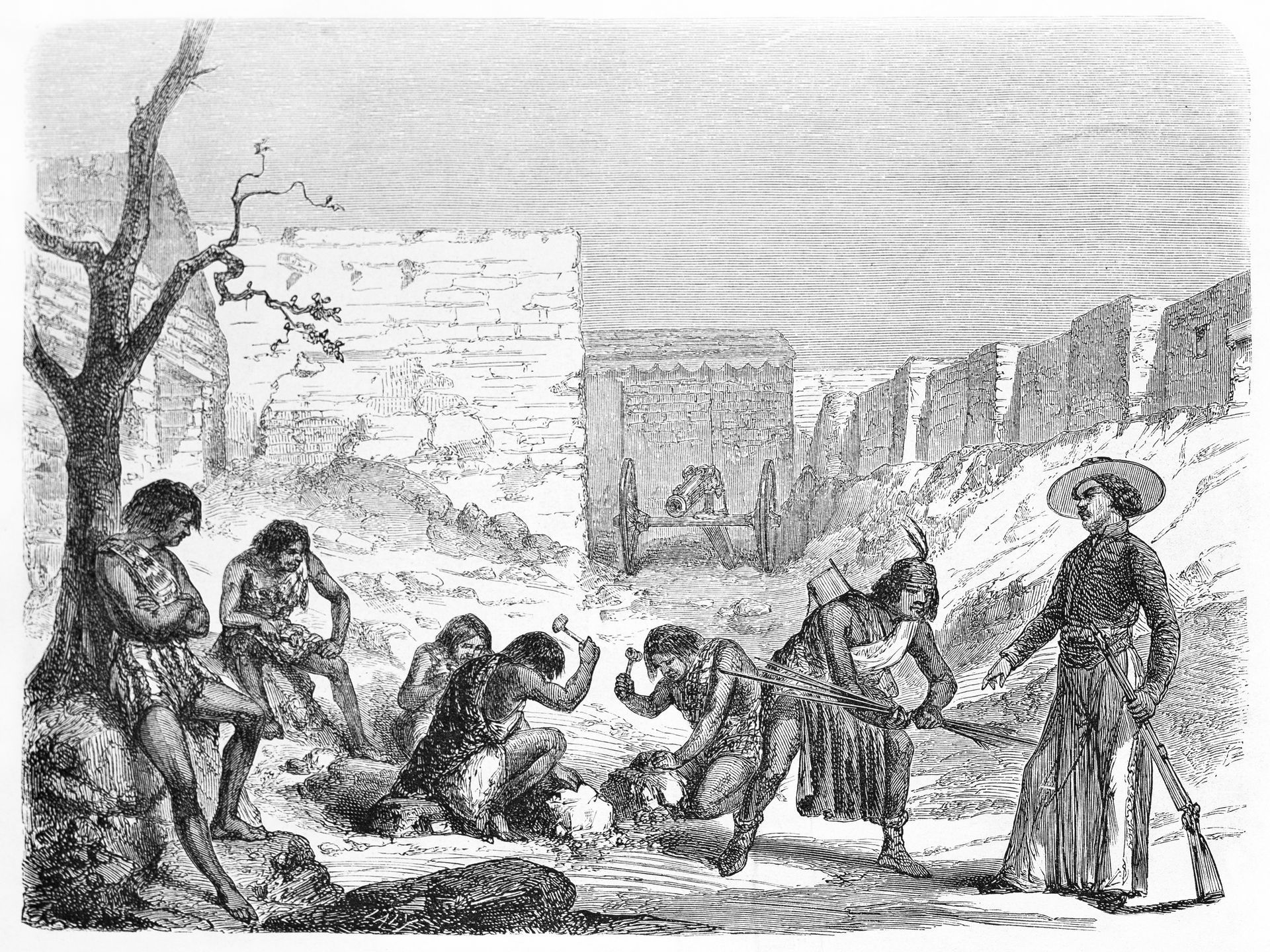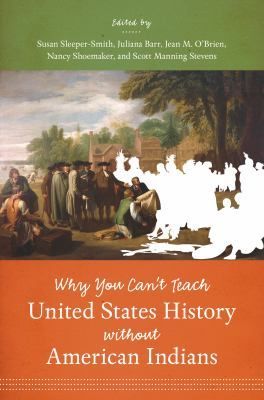Doctrine of Discovery
Hey there! Did you know about the negative impact of the Doctrine of Discovery? It's a historical legal principle that "allowed" European powers to claim lands already inhabited by Indigenous peoples. This unjust doctrine has led to centuries of colonization, displacement, and the erosion of Indigenous rights. At Liberty Justice For All, we believe in educating, advocating, and communicating about these issues to build a more just and inclusive society for everyone. Together, let's work towards a future where liberty and justice truly are for all!
Impact of the Doctrine of Discovery
Courts in the present-day United States have been grounding decisions in the Doctrine of Discovery since before the establishment of the United States. In the more than two centuries that have followed the establishment of the United States, the Supreme Court has relied on the doctrine to decide a multitude of cases to the disadvantage of Indigenous Nations. The Indigenous Values Initiative's Doctrine of Discovery Project lists a selection of court cases that formed the precedents for City of Sherrill, New York v. Oneida Indian Nation of New York and subsequent cases for which City of Sherrill, New York v. Oneida Indian Nation of New York has served as precedent.
-
Definition of the Doctrine of Discovery
The Doctrine of Discovery is a historical legal concept and principle that originated in Europe during the Age of Exploration and Imperialism, particularly in the 15th and 16th centuries. It refers to a set of beliefs and legal principles that justified the colonization and domination of lands and peoples that were previously unknown to European powers.
Key elements of the Doctrine of Discovery include:
Claim of Sovereignty: European explorers and monarchs asserted that the mere act of discovery gave them the right to claim sovereignty and ownership over newly encountered lands, regardless of the presence of Indigenous populations.
Christianity and Superiority: The Doctrine incorporated religious justifications, arguing that Christian nations had a moral duty to convert and civilize non-Christian peoples. Europeans considered themselves culturally and morally superior.
Extinguishing Indigenous Rights: The Doctrine was and continues to be used to assert that Indigenous peoples had / have limited or no rights to their ancestral lands, as their occupancy was viewed as temporary and inferior.
Legal Framework: Over time, the Doctrine of Discovery has become incorporated into the legal systems of European powers and has been used to legitimize treaties, land acquisitions, and territorial expansions.
Impact on Indigenous Peoples: The Doctrine of Discovery had and continues to have devastating consequences for Indigenous populations, as it facilitated land dispossession, forced assimilation, cultural erasure, and exploitation of resources.
It's important to note that while the Doctrine of Discovery was rooted in historical context, its legacy continues to affect Indigenous communities to this day. Efforts to address and rectify the historical injustices associated with this doctrine have led to discussions on Indigenous rights, land restitution, and reconciliation in many parts of the world.
-
Historical context and origin of the Doctrine of Discovery
The Doctrine of Discovery originated in the late 15th and early 16th centuries during the Age of Exploration and Imperialism. Its historical context can be summarized as follows:
Historical Context:
Age of Exploration: In the late 15th century, European powers, notably Spain and Portugal, embarked on a period of intense exploration to find new trade routes and territories.
Competition for Resources: European nations were motivated by the desire to access valuable resources, including spices, precious metals, and land suitable for agriculture.
Religious Zeal: The Catholic Church played a significant role, with the Papal Bulls (notably the Bull Inter Caetera of 1493) issued by Pope Alexander VI, which divided the newly discovered lands between Spain and Portugal and encouraged the spread of Christianity.
Absence of Existing International Law: At the time, there were no established international laws governing the rights of indigenous peoples or the treatment of newly discovered lands.
Origin:
The Doctrine of Discovery can be traced to several key events:
Christopher Columbus' Voyages: Columbus's voyages to the Americas in 1492 and subsequent journeys set a precedent. He claimed the lands he encountered in the name of Spain, invoking the authority of the Papal Bulls.
Treaties of Tordesillas (1494) and Zaragoza (1529): These treaties divided the newly discovered lands between Spain and Portugal, further legitimizing European claims over vast territories.
Legal Doctrine: Legal scholars and European monarchs began to develop a legal framework based on the idea that the mere act of discovery conferred sovereignty over Indigenous lands and peoples. This concept was later formalized into the Doctrine of Discovery.
The Doctrine of Discovery, with its emphasis on Christian superiority, served as a rationalization for European colonization, exploitation, and murder of Indigenous peoples and the disposition of their lands. It laid the foundation for centuries of colonialism, exploitation, and the subjugation of Indigenous populations, leaving a lasting legacy of injustice and conflict in many parts of the world.
-
The lasting impact of the Doctrine of Discovery on Indigenous Communities
The Doctrine of Discovery has had far-reaching and enduring consequences, primarily for Indigenous populations in the Americas, but also in other parts of the world. These consequences include:
Land Dispossession: One of the most immediate and devastating impacts of the Doctrine of Discovery was the dispossession of Indigenous lands. European colonizers claimed ownership of vast territories based on the mere act of discovery, leading to the forced displacement and dispossession of Indigenous peoples from their ancestral lands.
Cultural Disruption: Indigenous cultures and ways of life were profoundly disrupted and often destroyed. European colonizers imposed their languages, religions, and customs on Indigenous populations, leading to the loss of traditional languages, beliefs, and practices.
Forced Assimilation: Indigenous peoples were often subjected to forced assimilation policies, including the suppression of indigenous languages and religious practices. Many were forcibly converted to Christianity, erasing their traditional spiritual beliefs.
Loss of Autonomy: Indigenous governance systems were undermined or dismantled by colonial powers. Indigenous nations were often denied their autonomy and self-determination, as European colonizers established control over their political structures.
Resource Exploitation: European powers exploited the natural resources of the newly colonized lands, often without regard for the sustainability of these resources. This led to environmental degradation and loss of access to vital resources for indigenous communities.
Economic Exploitation: Indigenous peoples were often subjected to exploitative labor practices, including forced labor and slavery. They were paid unfairly or not at all for their work, contributing to economic disparities that persist to this day.
Health Impact: The introduction of new diseases, to which Indigenous populations had no immunity, led to devastating epidemics. Diseases such as smallpox, measles, and influenza decimated Indigenous communities, resulting in significant population declines.
Psychological and Emotional Toll: The trauma of colonization and the loss of cultural identity had profound psychological and emotional effects on Indigenous peoples, contributing to high rates of all forms of health challenges including mental health issues and substance abuse.
Legal Inequities: Indigenous peoples were often denied legal recognition and protection of their rights, this struggle for rights continues today. Discriminatory laws and policies perpetuated systemic injustices, making it difficult for Indigenous communities to access justice and defend their interests.
Intergenerational Impact: Many of these consequences have been passed down through generations, creating a cycle of poverty, inequality, and cultural loss that continues to affect Indigenous communities today.
Ongoing Struggles: Indigenous communities continue to face challenges related to land rights, self-determination, and cultural preservation. Efforts to address these historical injustices, seek reparations, and promote reconciliation are ongoing.
In summary, the Doctrine of Discovery had profound and enduring negative consequences for Indigenous populations, including land dispossession, cultural disruption, economic and social exploitation, and lasting trauma. Recognizing and addressing these historical injustices remains a critical issue in many parts of the world today.
-
Papal Bulls
Papal Bulls are official documents or decrees issued by the Pope, the leader of the Roman Catholic Church. These documents have been used throughout history to address a wide range of matters, including doctrinal issues, the administration of the Church, relations with secular authorities, and matters related to exploration and colonization. One of the most significant aspects of Papal Bulls in the context of exploration and colonization was their role in shaping European expansion overseas. Here are some key points about Papal Bulls:
Inter Caetera (1493): Perhaps the most famous Papal Bull related to exploration is the Bull Inter Caetera issued by Pope Alexander VI in 1493. It followed Christopher Columbus's first voyage to the Americas. This bull divided the newly discovered lands between Spain and Portugal along a line of longitude, known as the Line of Demarcation, with lands to the west belonging to Spain and lands to the east belonging to Portugal. This division was intended to avoid conflicts between the two powerful Catholic nations.
Religious Justification: Many Papal Bulls of this era invoked religious authority to legitimize European claims over newly discovered lands. They included language encouraging the spread of Christianity among Indigenous peoples. The belief was that European monarchs had a divine right and responsibility to bring Christianity to non-Christian regions.
Doctrine of Discovery: While not explicitly mentioned in the Inter Caetera Bull, the idea that the act of discovery itself conferred sovereignty and ownership over newly found lands became known as the "Doctrine of Discovery." It was further developed and elaborated upon in subsequent Papal Bulls and legal writings.
Subsequent Bulls: Other Papal Bulls, such as Dudum siquidem (1512) and Sublimis Deus (1537), sought to clarify or modify earlier decrees, often in response to disputes between European powers over territorial claims in the New World.
Controversy and Reevaluation: In modern times, these Papal Bulls have been criticized for their role in justifying colonization, dispossession, and the murder of Indigenous peoples. Many view them as examples of how religious authority was used to sanction and legitimize the colonization process.
Impact on International Law: The principles outlined in these Papal Bulls had a lasting impact on international law and the treatment of Indigenous peoples. They set the stage for discussions on Indigenous rights, sovereignty, and land claims in the centuries that followed.
Who Are These People Anyway? by Irving Powless, Jr. (Author); Lesley Forrester (Editor)
Call Number: E99.I7 P69 2016
ISBN: 9780815634492
Publication Date: 2016-02-29
-
Who Are These People Anyway?
Chief Irving Powless Jr. was Chief of the Beaver Clan of the Onondaga Nation from 1964 until his death in 2017 at age 88. An historian, statesman, actor, musician, and veteran, he lectured about Indigenous culture and sovereignty, and was a key spokesperson for the Haudenosaunee nations.
In the rich tradition of oral storytelling, Chief Irving Powless Jr. of the Beaver Clan of the Onondaga Nation reminds us of an ancient treaty. It promises that the Haudenosaunee people and non-Indigenous North Americans will respect each other's differences even when their cultures and behaviors differ greatly. Powless shares intimate stories of growing up close to the earth, of his work as Wampum Keeper for the Haudenosaunee people, of his heritage as a lacrosse player, and of the treaties his ancestors made with the newcomers.
Call Number: E76.6 .W499 2015eb
ISBN: 9781469621210
Publication Date: 2015-04-20
-
Why You Can't Teach United States History Without American Indians
A resource for all who teach and study history, this book illuminates the unmistakable centrality of Indigenous history to the full sweep of American history. The nineteen essays gathered in this collaboratively produced volume, written by leading scholars in the field of Native American history, reflect the newest directions of the field and are organized to follow the chronological arc of the standard American history survey. Contributors reassess major events, themes, groups of historical actors, and approaches--social, cultural, military, and political--consistently demonstrating how Native American people, and questions of Native American sovereignty, have animated all the ways we consider the nation's past. The uniqueness of Indigenous history, as interwoven more fully in the American story, will challenge students to think in new ways about larger themes in U.S. history, such as settlement and colonization, economic and political power, citizenship and movements for equality, and the fundamental question of what it means to be an American.
Columbus and other cannibals : the wétiko disease of exploitation, imperialism, and terrorismT by Jack D. Forbes.
ISBN: 1282744992
Publication Date: 2008
-
Columbus and Other Cannibals
Jack D. Forbes’s Columbus and Other Cannibals was one of the founding texts of the anticivilization movement when it was first published in 1978. His history of terrorism, genocide, and ecocide told from an Indigenous point of view has inspired America’s most influential activists for decades.
Cultural Disruption:
One issues that we're passionate about is the cultural disruption caused by the Doctrine of Discovery. This outdated doctrine, rooted in colonialism, has had a profound impact on indigenous cultures around the world. By shedding light on this injustice, we hope to spark conversations and work towards a more inclusive and equitable future for all. Join us in our fight for democracy!

Forced Assimilation

Forced assimilation refers to a deliberate policy or practice where one group, often a dominant or colonizing group, imposes its culture, language, religion, and way of life upon another group, typically a minority or indigenous population, with the aim of eradicating or subduing the target group's own cultural identity. It involves various methods of coercion, pressure, or violence to compel members of the targeted group to adopt the culture and norms of the dominant group. Here is an in-depth explanation of forced assimilation:
-
Historical Context:
Forced assimilation has been a common strategy employed by colonial powers throughout history, often accompanying colonial expansion. It is rooted in the belief that the culture, religion, or way of life of the colonizers is superior and should replace the culture of the colonized population.
-
Methods of Coercion:
- Suppression of Language: One of the most effective ways to enforce assimilation is through the suppression or prohibition of the language of the targeted group. This includes forbidding the use of native languages in education, public life, and religious ceremonies.
- Religious Conversion: Often, the dominant group imposes its religion on the targeted group, sometimes through force or manipulation. Missionary activities, sometimes supported by the state, can be used to convert indigenous or minority populations.
- Cultural Erasure: The destruction of cultural symbols, practices, and artifacts, such as sacred sites or traditional clothing, can be used to erode the cultural identity of the targeted group.
- Education: The education system may be used to teach the culture and values of the dominant group while suppressing or omitting the history and culture of the targeted group.
- Forced Labor: In some cases, forced labor is used as a means of assimilation, where members of the targeted group are made to adopt the work patterns and lifestyles of the dominant culture.
- Marriage and Family Policies: Policies may encourage or mandate intermarriage between members of the dominant group and the targeted group, with the aim of diluting the cultural identity of the latter..
-
Impact of Forced Assimilation:
- Cultural Loss: Forced assimilation results in the loss of cultural practices, traditions, and languages that are integral to the identity of the targeted group.
- Psychological and Emotional Impact: The experience of forced assimilation can lead to profound psychological and emotional trauma, as individuals may be forced to suppress or deny their own cultural identity and heritage.
- Social Disruption: Forced assimilation can lead to social disruption, as it often creates tensions within communities and may result in the loss of traditional social structures and roles.
- Inequality and Discrimination: Even after assimilation policies have ended, the targeted group may continue to face inequality and discrimination, as they often occupy lower social, economic, and political positions within the dominant society.
-
Contemporary Repercussions:
Forced assimilation policies have left a lasting legacy in many societies, contributing to ongoing issues of cultural revival, social inequality, and intergenerational trauma. Indigenous and minority groups in many parts of the world continue to struggle for recognition, cultural preservation, and justice in the aftermath of forced assimilation practices.
-
Destruction of Indigenous Languages and Cultures
Cultural Loss: The suppression of indigenous languages and cultures leads to the loss of unique knowledge, traditions, and worldviews. Indigenous languages often contain deep connections to the environment, history, and spirituality of a particular group.
Identity Crisis: The loss of language and cultural practices can result in an identity crisis among indigenous individuals and communities. It can be challenging to maintain a sense of identity and belonging when these foundational elements are suppressed.
Intergenerational Trauma: The trauma experienced by previous generations due to cultural suppression can be passed down through families, leading to mental health issues, substance abuse, and social problems in indigenous communities.
Erosion of Traditional Knowledge: Many indigenous cultures possess invaluable knowledge about sustainable land use, herbal medicine, and ecological practices. The suppression of these cultures can contribute to environmental degradation and the loss of traditional ecological knowledge.
Social Disruption: The disruption of indigenous cultures can lead to social tensions, as traditional social structures and roles are undermined. This can result in social disintegration and inequality within indigenous communities.
Continued Inequality: Even after the end of explicit suppression policies, indigenous communities may continue to face inequality, discrimination, and a lack of access to resources and opportunities, making it challenging to revive their languages and cultures.
Efforts to combat the suppression of indigenous languages and cultures often involve language revitalization programs, cultural preservation initiatives, and legal recognition of indigenous rights. These efforts aim to empower indigenous communities to reclaim and celebrate their cultural heritage while seeking justice for the historical injustices they have endured.
-
Conversion to Christianity
The conversion to Christianity, particularly during colonial eras, often carried a destructive and traumatic nature for indigenous peoples. One stark example is the establishment of boarding schools, where indigenous children were forcibly separated from their families and communities. These schools aimed to eradicate indigenous languages, cultures, and spiritual beliefs, in favor of European-Christian values. The devastating consequences of such policies included a profound loss of life, as many children endured harsh conditions, neglect, abuse, and inadequate healthcare in these institutions. Additionally, practices such as forcibly cutting indigenous peoples' hair, which held deep cultural and spiritual significance, were intended to strip them of their identity and autonomy. These actions underscore the coercive and oppressive methods used to impose Christianity and European values upon indigenous populations, leaving a legacy of intergenerational trauma, cultural loss, and social dislocation that continues to be felt by indigenous communities today.




